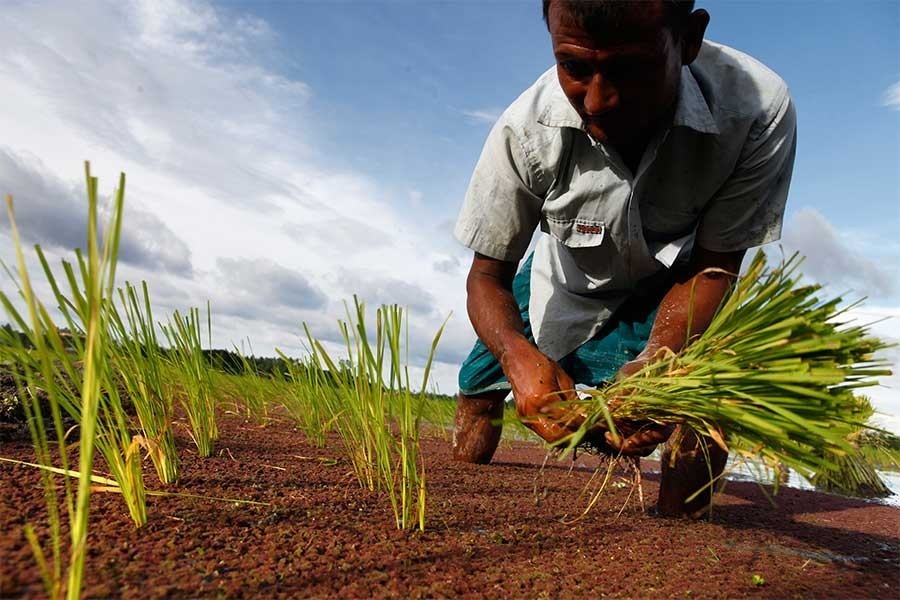
Published :
Updated :

It seems as though the issue of minimum wage for workers is a contentious one in this country. Raised for the first time by rights activists decades ago, there were half-hearted moves on the part of the government to somehow address the situation, albeit in a face-saving manner-- with no meaningful outcome. The right activists' movement mainly focused on minimum wages for the readymade garment (RMG) workers who as a single group comprised an overwhelming force of 4.0 million-plus wage earners with a vast majority of them being women. There were repeated movements to hammer home the demand for minimum wages for skilled and unskilled garment workers, which finally resulted in a formula that still falls short of the needs.
The demand of the garment workers received both media and government attention time and again, and clearly, this was because of their being an organised group associated with the manufacturing of the country's number one export product. Now, when it comes to the minimum wage in respect of a multitude of other sectors, the situation is simply shocking. The worst victims are the farm workers, who being part of the most disorganised sector are often not considered to be under the purview of any worthwhile government intervention-for settling their minimum wages. Lately, however, it has been reported in the newspapers that the government has taken a move to institutionalise minimum wages for agricultural workers under a formal wage structure. Wages and other rights of around 8.0 million farm workers will now be dealt under the Labour Act-2006 as the government scrapped the Agricultural Labour (Minimum Wages) Ordinance, 1984. No doubt, this would be the first step towards wage formalisation of the country's largest workforce. The law, justice and parliamentary affairs ministry on October 13 scrapped the earlier ordinance following recommendations made by the labour and employment ministry.
Scrapping the ordinance, experts believe, would help find out a suitable mechanism for setting minimum wage for farm workers. According to the now-defunct ordinance, the minimum rate of wages for agricultural labour per day had to be equal to the price of 3.27 kilograms of rice on the local market. There was a provision for formation of a Council of Minimum Wages and Prices for Agricultural Labour in the ordinance. The government was supposed to review from time to time the minimum rate of wages on the recommendation of the Council, but no such review was undertaken. Had this been done, the wages, even in terms of the price of rice, would have risen manifold.
Now, following the scrapping of the ordinance, it is expected that the government would be able to settle the minimum wages and other issues of agricultural workers as per the labour law. According to the labour law, an agricultural worker is a person employed in agricultural work on daily, monthly or yearly wage basis. The law also allows formation of trade union by workers at an agricultural farm where not less than five workers work.
According to the Agriculture and Rural Statistics-2018, published in May 2019, of the Bangladesh Bureau of Statistics, a total of .24 billion people-- 51.88 per cent of total employment, were employed in agriculture. Of them, 29.89 per cent were agricultural labourers and the average wage of an agricultural labourer was Tk 386 a day. For male, the average wage was Tk 388 and for female it was Tk 246.
It must be kept in mind that most of those employed in farm activities are seasonal workers, which clearly explains why there is a dire need to raise the wage to a reasonable level. Observers agree that while low wage causes scarcity of workers, particularly in paddy harvesting seasons, it is also instrumental in fuelling urban migration. Evidently, urban migration of jobless, landless people are mounting over the past decades beyond conceivable proportions. These migrants are forced to be displaced from their ancestral roots, often by selling out whatever little they have in terms of property, only to seek meagre livelihood means as day labourers, rickshaw pullers. Had they been in a position to retain themselves in their homesteads with the prospect of a decent wage to somehow pull themselves through, it was likely that they could have engaged themselves in one or another source of income generation.
The move to formalise a minimum wage structure will surely pave the way for agricultural workers to claim the rights recognised for other formal sectors' workers. According to experts, a minimum wage for the sector should be determined considering the productivity and availability of workers, types of products, prices and profits and living cost of workers.


 For all latest news, follow The Financial Express Google News channel.
For all latest news, follow The Financial Express Google News channel.